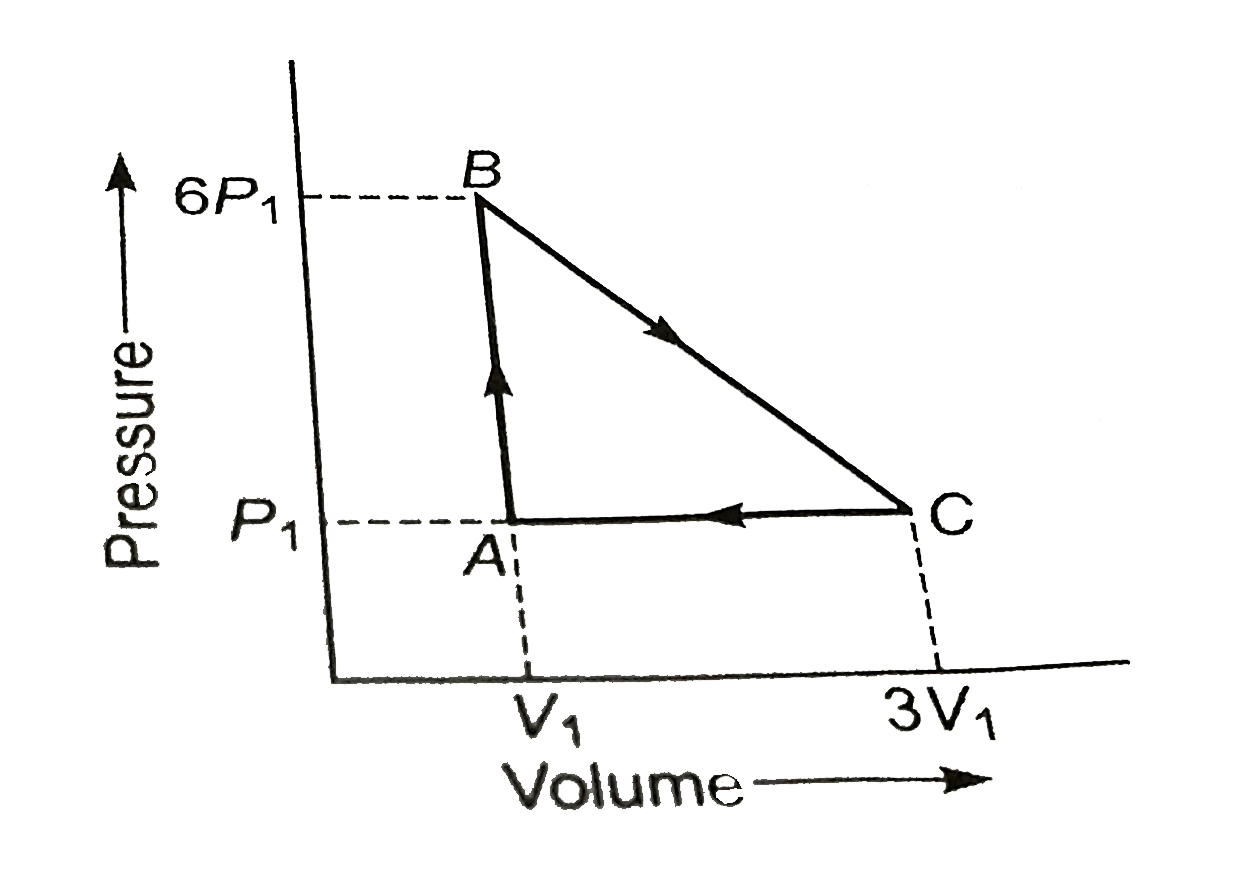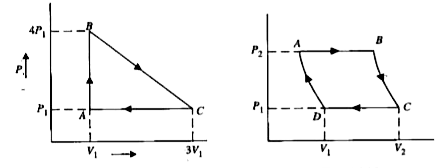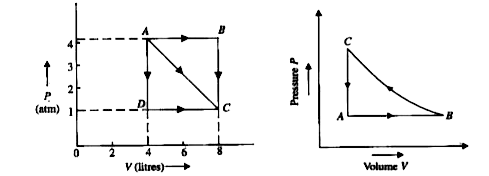SELECTED PROBLEMS (FROM FIRST LAW OF THERMODYNAMICS ) from S CHAND PHYSICS (ENGLISH) INTERNAL ENERGY for Class 11
| Class 11 | PHYSICS |
| Chapter | INTERNAL ENERGY |
| S CHAND PHYSICS (ENGLISH) | SELECTED PROBLEMS (FROM FIRST LAW OF THERMODYNAMICS ) |
| Medium | English |
| Academic Year | 2023-2024 |
Question 4
A 10 kW drilling machine is used to drill a bore in a small aluminium block of mass 8.0 kg. How much is the rise in temperature of the block 'in 2.5 minutes, assuming 50% of power is used up in heating the machine itself or lost to the surroundings ? Specific heat of aluminium 0.91Jg−1∘C−1.View SolutionQuestion 5
Chemical reactions are invariably associated with the transfter of energy either in the form of heat or light. In the laboratory, heat changes in physical and chemical processes are measured with an instrument called calorimeter. Heat change in the process is calculated as
q=msΔTs=Specific heat=cΔTc=Heat capacity
Heat of reaction at constant volume is measured using bomb calorimeter.
qV=ΔU= Internal energy change
Heat of reaction at constant pressure is measured using simple or water calorimeter.
qp=ΔH
qp=qV+PΔV
ΔH=ΔU+ΔnRT
The enthalpy of fusion of ice is 6.02kJmol−1. The heat capacity of water is 4.18Jg−1C−1. What is the smallest number of ice cubes at 0∘C, each containing one molw of water, the are needed to cool 500g of liquid water from 20∘C→0∘C?View SolutionQuestion 14
From what height must a piece of lead be dropped if the heat generated on impact with the ground is just sufficient to melt it. Assume that all the heat is confined to lead. The initial temperature of lead is 27∘C and its final temperature is 327∘C. Specific heat capacity of lead 0.125×103J/Kg/K. Latent heat of fusion of lead =31×103J/kg. View SolutionQuestion 17
A lead bullet just melts when stopped by an obstacle. Assuming that 25% of heat is absrobed by the obstacle find the velocity of the bullet if the initial temperature was 27∘C. Melting point of lead =327∘C, specific heat of lead =0.03calg−1∘C−1. Latent heat of fusion of lead =6calg−1.View SolutionQuestion 18
From what height must a piece of lead be dropped if the heat generated on impact with the ground is just sufficient to melt it. Assume that all the heat is confined to lead. The initial temperature of lead is 27∘C and its final temperature is 327∘C. Specific heat capacity of lead 0.125×103J/Kg/K. Latent heat of fusion of lead =31×103J/kg. View SolutionQuestion 24
A given mass of gas at a pressure of 0.75 m of mercury is compressed isothermally until its volume is reduced to 3/4th of its volume. It is then made to expand adiabatically to a volume 1/5 times greater than its original volume. Calculate the final temperature if its initial temperature was 290 K.(Y=1.4)View SolutionQuestion 29
In changing the state of a gas adiabatically from an equilibrium state A to another equilibrium state B, an amount of work equal to 22.3 J is done on the system. If the gas is taken from state A to B, via a process in which the net heat absorbed by the system is 9.35 cal, how much is the net work done by the system in the latter case ?View SolutionQuestion 36
The PV diagram for cyclic process is a triangle ABC see Fig. drawn in order. The co-ordinates of A, B and Care (4,1), (2,4) and (2,1). The co-ordinates are in order of P and V in which P is Nm2 and volume is in litre. Calculate the work done during the process from A to B, B to C and C to A. Also calculate the work done in the complete cycle.
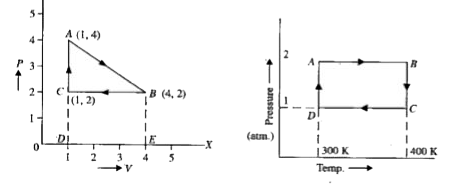 View Solution
View SolutionQuestion 41
consider the cyclic process ABCA on a sample of 2.0 mol of an ideal gas as shown in the fig. temperature of the gas at A and B are 300 K and 500 k respectively. A total of 1200 J heat is withdrawn from the sample in the process. Find the work done by the gas in part BC. take R=8.3JK−1mol−1
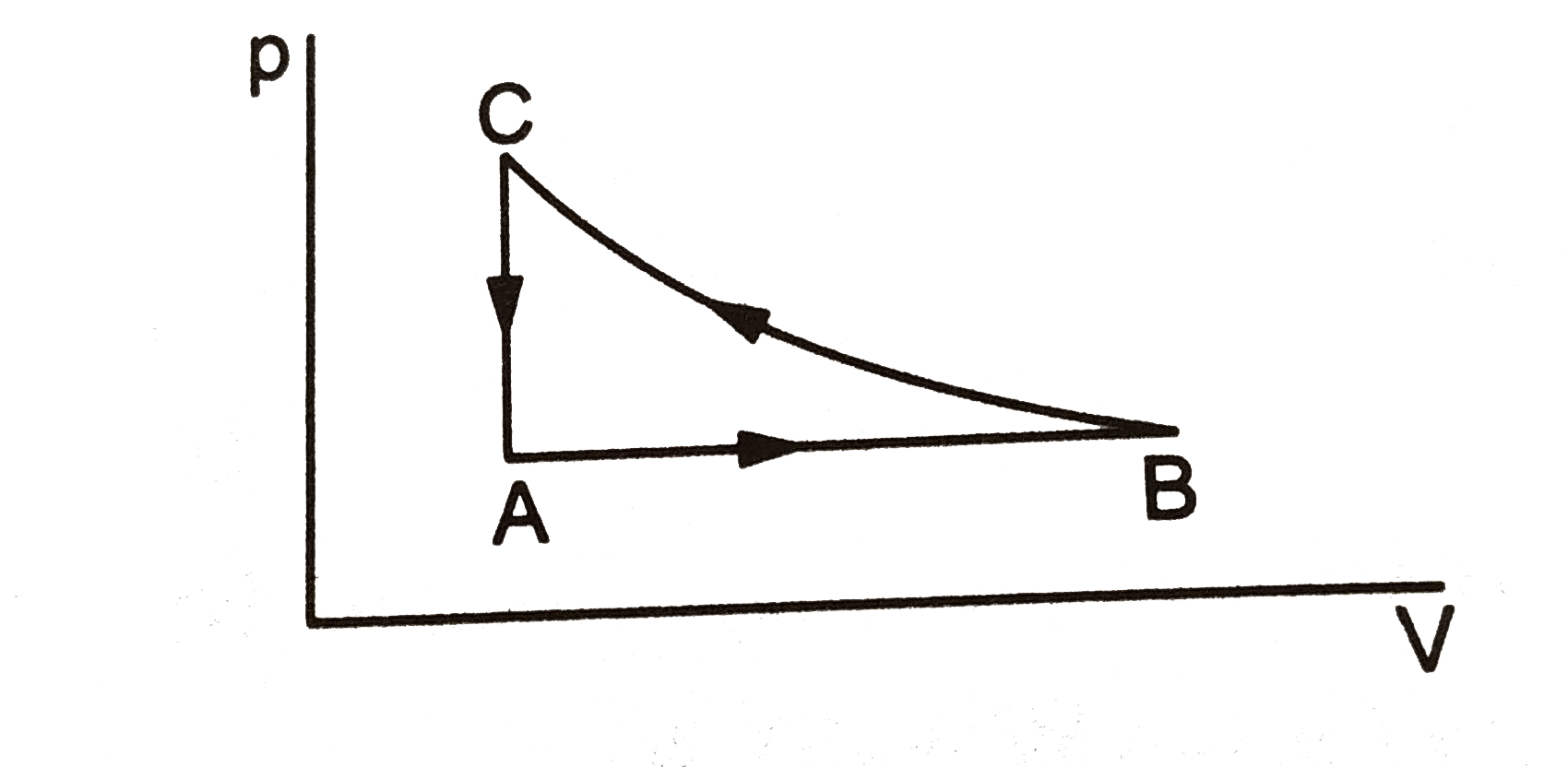 View Solution
View SolutionQuestion 46
A carnot engine is operated between two reserviors at temperatures of 500 K and 400 K. The engine receives 840 Joules of heat from the source in each cycle. Calculate (a) the amount of heat rejected to sink in each cycle (b) the efficiency of the engine, and (c) the work done in each cycle.View Solution
All Exercises from S CHAND PHYSICS (ENGLISH) Class 11 PHYSICS INTERNAL ENERGY
- CONCEPTUAL SHORT ANSWER QUESTIONS WITH ANSWERS
- LONG ANSWER QUESTIONS
- SHORT ANSWER QUESTIONS
- VERY SHORT ANSWER QUESTIONS
- SELECTED PROBLEMS (FROM FIRST LAW OF THERMODYNAMICS )
- SELECTED PROBLEMS (FROM HEAT ENGINES)
- SELECTED PROBLEMS (FROM ISOTHERMAL AND ADIABATIC PROCESSES )
- SELECTED PROBLEMS (FROM SPECIFIC HEAT CAPACITY `C_(P) AND C _(V)` )
- SELECTED PROBLEMS (FROM WORK DONE AND INDICATOR DIAGRAM )
- ADDITIONAL SOLVED PROBLEMS
- EXAMPLE
- SOLVED EXAMPLES
